How to install mysql database and configure Java project in linux
1. Install the mysql database
①Download and unzip it and upload it to the /opt/soft directory (the soft directory is created by yourself)
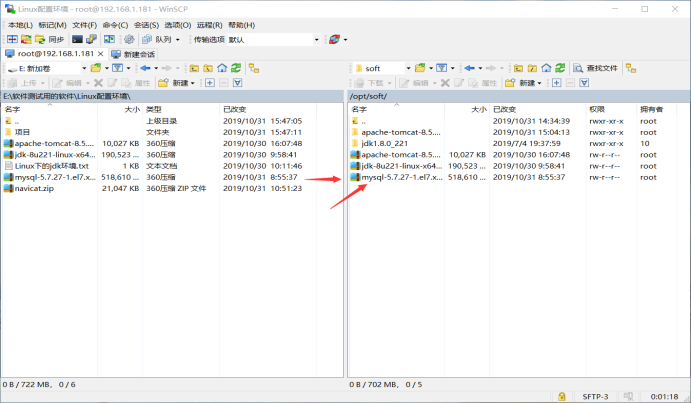
②Extract: tar -xvf mysql-5.7.27-1.el7.x86_64.rpm-bundle.tar

 ##rpm -qa | grep mariadb
##rpm -qa | grep mariadb
 2. Uninstall the existing database: (Uninstalling will also uninstall the dependent packages of this package)
2. Uninstall the existing database: (Uninstalling will also uninstall the dependent packages of this package)
yum -y remove mariadb-libs.x86_64
## ④Install the mysql community edition service package: 
Found that 5 dependency packages are needed, so install the dependency package first (needed dependency) 
Found that this package depends on: mysql-community-libs, so install mysql-community- first libs package. 
3. Then install mysql-community-cient-5.7.27-1.el7.x86_64.rpm
4. Install mysql-community-common Dependency package: 
⑥Verify whether mysql is installed successfully (no error at startup indicates successful installation) 
 2. Find the temporary password and modify it
2. Find the temporary password and modify it
① Find the file that stores the temporary password:
find / -name mysql*log ② View the temporary password: 
(Password is c_xmovu7jjcw)
④In the environment of mysql database: 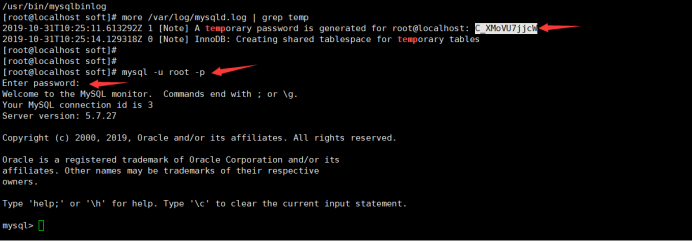
2. Set the length of mysql password: 
4. Exit: quit; Or ctrl z
3. View and create remote connection users
① Check whether the user can connect remotely:
1. Log in: mysql -u root -p; enter the password to log in (123456)

2. Enter: use mysql;

3. View: select host,user,authentication_string from user;

②Create remote user
1. Create user: create user 'myroot'@'%' identified by '123456';

2. Grant all privileges on *.* to 'myroot'@'%';


4. Use the navicat tool to log in remotely
①Close the firewall: systemctl stop firewalld.service②Connect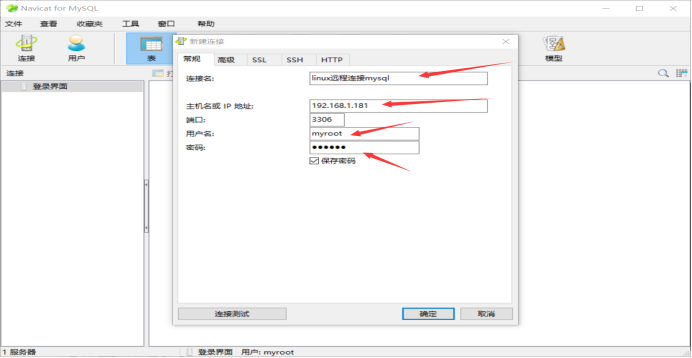

The project includes: program package (.war) data package (.sql)
①Upload the .war and program package to the wbapps directory under tomcat (in /opt/soft/apach-tomcat -8.5.47 directory)
# ② Import the .sql data package into navicat (after connecting, left-click, and then click to run the sql file) 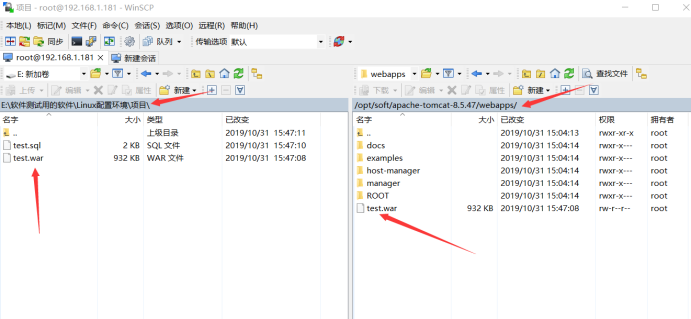
③Start the tomcat service: (To be started in the bin directory under the apache-tomcat-8.5.47 directory) 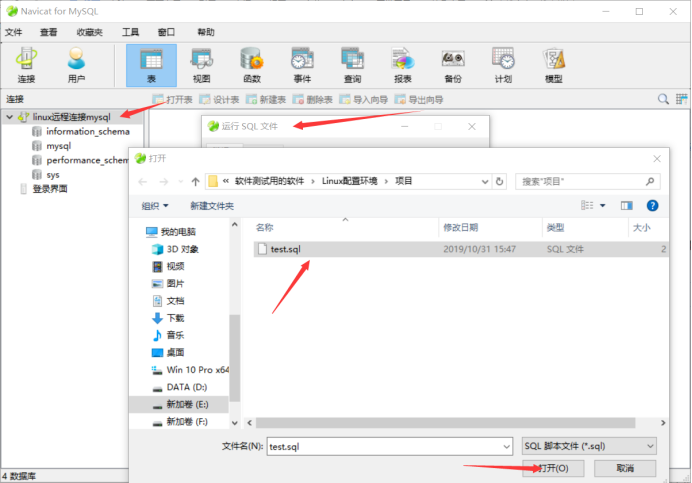
④Modify the file connecting the project to the database so that the project can connect to the database 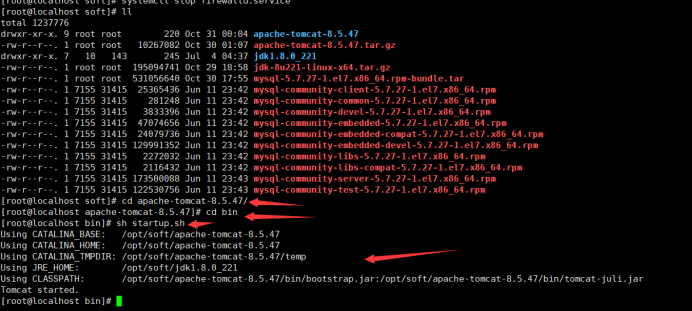
Modification: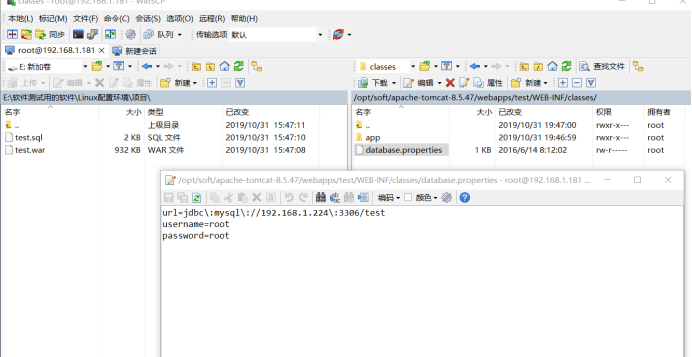
⑥ Turn off the firewall:
systemctl stop firewalld.service
⑦Open the web page: enter 192.168.1.181:8080/test 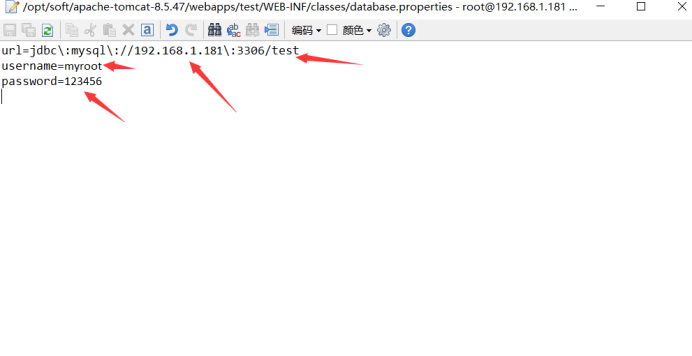
⑧Enter user name and password to test login
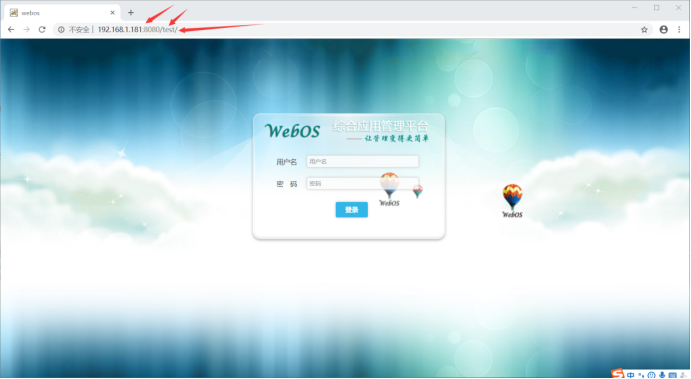 ⑨Login
⑨Login
The above is the detailed content of How to install mysql database and configure Java project in linux. For more information, please follow other related articles on the PHP Chinese website!

Hot AI Tools

Undresser.AI Undress
AI-powered app for creating realistic nude photos

AI Clothes Remover
Online AI tool for removing clothes from photos.

Undress AI Tool
Undress images for free

Clothoff.io
AI clothes remover

Video Face Swap
Swap faces in any video effortlessly with our completely free AI face swap tool!

Hot Article

Hot Tools

Notepad++7.3.1
Easy-to-use and free code editor

SublimeText3 Chinese version
Chinese version, very easy to use

Zend Studio 13.0.1
Powerful PHP integrated development environment

Dreamweaver CS6
Visual web development tools

SublimeText3 Mac version
God-level code editing software (SublimeText3)

Hot Topics
 1662
1662
 14
14
 1419
1419
 52
52
 1311
1311
 25
25
 1261
1261
 29
29
 1234
1234
 24
24
 Explain the purpose of foreign keys in MySQL.
Apr 25, 2025 am 12:17 AM
Explain the purpose of foreign keys in MySQL.
Apr 25, 2025 am 12:17 AM
In MySQL, the function of foreign keys is to establish the relationship between tables and ensure the consistency and integrity of the data. Foreign keys maintain the effectiveness of data through reference integrity checks and cascading operations. Pay attention to performance optimization and avoid common errors when using them.
 Compare and contrast MySQL and MariaDB.
Apr 26, 2025 am 12:08 AM
Compare and contrast MySQL and MariaDB.
Apr 26, 2025 am 12:08 AM
The main difference between MySQL and MariaDB is performance, functionality and license: 1. MySQL is developed by Oracle, and MariaDB is its fork. 2. MariaDB may perform better in high load environments. 3.MariaDB provides more storage engines and functions. 4.MySQL adopts a dual license, and MariaDB is completely open source. The existing infrastructure, performance requirements, functional requirements and license costs should be taken into account when choosing.
 SQL vs. MySQL: Clarifying the Relationship Between the Two
Apr 24, 2025 am 12:02 AM
SQL vs. MySQL: Clarifying the Relationship Between the Two
Apr 24, 2025 am 12:02 AM
SQL is a standard language for managing relational databases, while MySQL is a database management system that uses SQL. SQL defines ways to interact with a database, including CRUD operations, while MySQL implements the SQL standard and provides additional features such as stored procedures and triggers.
 macOS vs. Linux: Exploring the Differences and Similarities
Apr 25, 2025 am 12:03 AM
macOS vs. Linux: Exploring the Differences and Similarities
Apr 25, 2025 am 12:03 AM
macOSandLinuxbothofferuniquestrengths:macOSprovidesauser-friendlyexperiencewithexcellenthardwareintegration,whileLinuxexcelsinflexibilityandcommunitysupport.macOS,developedbyApple,isknownforitssleekinterfaceandecosystemintegration,whereasLinux,beingo
 Discuss situations where writing platform-specific code in Java might be necessary.
Apr 25, 2025 am 12:22 AM
Discuss situations where writing platform-specific code in Java might be necessary.
Apr 25, 2025 am 12:22 AM
Reasons for writing platform-specific code in Java include access to specific operating system features, interacting with specific hardware, and optimizing performance. 1) Use JNA or JNI to access the Windows registry; 2) Interact with Linux-specific hardware drivers through JNI; 3) Use Metal to optimize gaming performance on macOS through JNI. Nevertheless, writing platform-specific code can affect the portability of the code, increase complexity, and potentially pose performance overhead and security risks.
 How to understand DMA operations in C?
Apr 28, 2025 pm 10:09 PM
How to understand DMA operations in C?
Apr 28, 2025 pm 10:09 PM
DMA in C refers to DirectMemoryAccess, a direct memory access technology, allowing hardware devices to directly transmit data to memory without CPU intervention. 1) DMA operation is highly dependent on hardware devices and drivers, and the implementation method varies from system to system. 2) Direct access to memory may bring security risks, and the correctness and security of the code must be ensured. 3) DMA can improve performance, but improper use may lead to degradation of system performance. Through practice and learning, we can master the skills of using DMA and maximize its effectiveness in scenarios such as high-speed data transmission and real-time signal processing.
 Explain how to use sessions for user authentication.
Apr 26, 2025 am 12:04 AM
Explain how to use sessions for user authentication.
Apr 26, 2025 am 12:04 AM
The session realizes user authentication through the server-side state management mechanism. 1) Session creation and generation of unique IDs, 2) IDs are passed through cookies, 3) Server stores and accesses session data through IDs, 4) User authentication and status management are realized, improving application security and user experience.
 An efficient way to batch insert data in MySQL
Apr 29, 2025 pm 04:18 PM
An efficient way to batch insert data in MySQL
Apr 29, 2025 pm 04:18 PM
Efficient methods for batch inserting data in MySQL include: 1. Using INSERTINTO...VALUES syntax, 2. Using LOADDATAINFILE command, 3. Using transaction processing, 4. Adjust batch size, 5. Disable indexing, 6. Using INSERTIGNORE or INSERT...ONDUPLICATEKEYUPDATE, these methods can significantly improve database operation efficiency.




